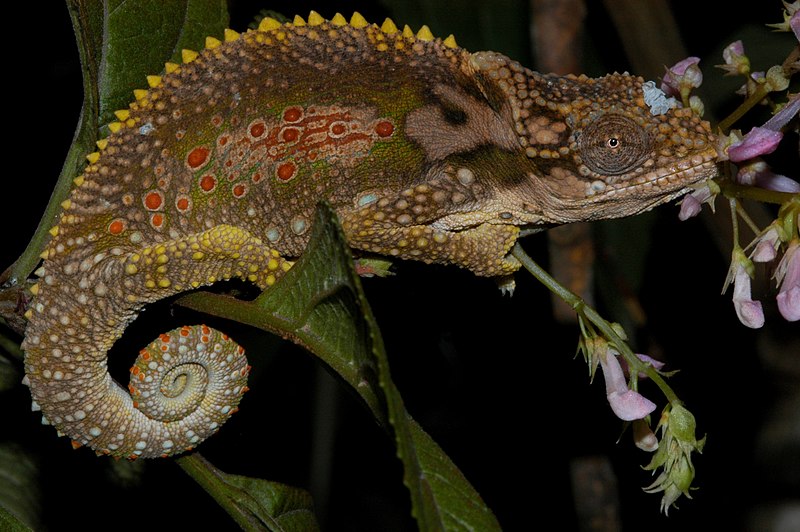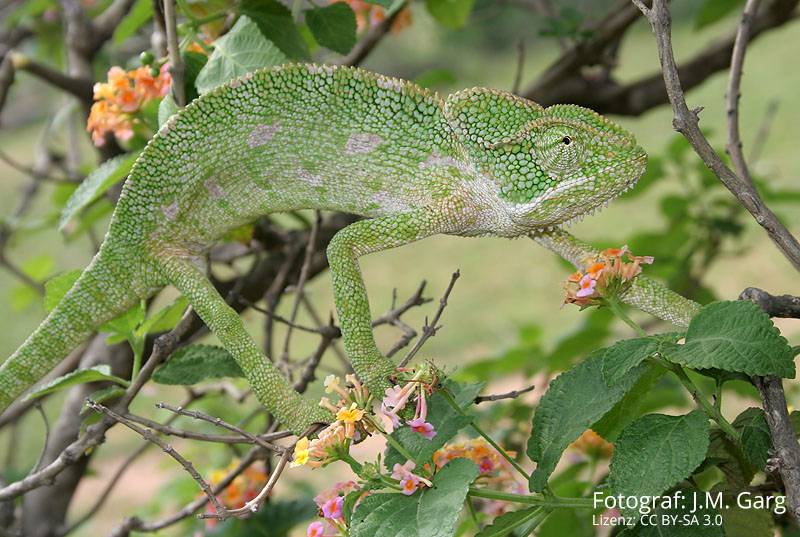From earlier studies, we know that the first chameleons evolved in the late Cretaceous, about 90 million years ago, on mainland of Africa. Around the border between the Cretaceous and Tertiary periods, about 65 million years ago, different species began to evolve. It is still unclear today which factors contributed to the diversity of species. Two researchers from Swansea University in Wales have now used various computational models of phylogenetics to investigate what might have influenced diversification (the splitting of chameleons into many different species).
First, they studied the diversification of chameleon species in Madagascar. In terms of evolutionary history, there are two points in time when chameleons apparently spread across the sea from mainland Africa to Madagascar. One is about 65 million years in the past, the other 45 million years. You could now think that the climatically extremely different habitats in Madagascar could have driven the evolution of the species very quickly after the spread across the sea. To the surprise of the researchers, however, no evidence of this was found. The species richness of chameleons on Madagascar must therefore come from the fact that chameleons spread there very early and thus simply had much more time to develop into different species than elsewhere.
Furthermore, the researchers investigated whether switching between two ecomorphs – from ground-dwelling stub-tailed chameleons to tree-dwelling chameleons with longer tails – had an impact on species diversity. Rather surprisingly, this did not seem to be the case. The evolution to tree-dwellers with longer tails occurred relatively early on one or two occasions. No evidence could be found that different ecomorphs accelerated diversification. Instead, speciation rates were found to slow down progressively over the last 60 million years. Only a very early dispersal event of the genus Bradypodion in South Africa around 10 million years ago was accompanied by a two- to fourfold diversification rate.
As a third focus of the study, the researchers examined the genus Bradypodion. During the climate change in the Miocene around 10 million years ago, South Africa changed a lot. Forests disappeared, leaving behind isolated forest habitats and, in between, savannahs, some of which are now so-called hot spots of biodiversity. Two of them, the Cape Floristic Region at the southwestern tip of South Africa and Maputuland-Pondoland-Albany on the east coast of South Africa, are home to a particularly large number of Bradypodion species. Each species is limited to a geographically very clearly defined area. The researchers, therefore, suspect that Bradypodion species have actually evolved faster under the influence of habitat change. It should be noted that the diversification rate of the genus Bradypodion is probably rather underestimated, as there are still many hidden species to be assumed.
Diversification dynamics of chameleons (Chamaeleonidae)
Stephen Giles, Kevin Arbuckle
Journal of Zoology, 2022
DOI: 10.1111/jzo.13019



